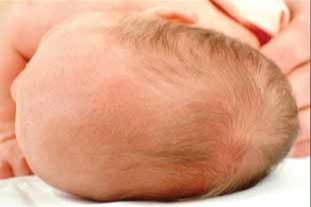Plagiocephaly
Bedding
Measurement
Torticollis
Positioning
Understanding Dolichocephaly: What Parent Should Know
May 10, 2024 2 min read

Dolichocephaly: it's a term that might sound daunting to parents, but understanding it is key to ensuring your child's health and well-being. In this blog post, we'll delve into what dolichocephaly is, how it differs from other similar conditions, and what steps you can take if your child is affected. Let's dive in.

What is Dolichocephaly?
Dolichocephaly is a condition characterized by a long and narrow head shape. Unlike the round or oval shape typical of most infants' heads, dolichocephaly presents as elongated from front to back. It's essential to note that while dolichocephaly can occur naturally, it can also result from external factors, such as positioning during infancy or certain medical conditions.
Understanding the Difference: Dolichocephaly vs. Scaphocephaly
While dolichocephaly and scaphocephaly are often used interchangeably, they are not the same condition. Dolichocephaly refers specifically to the elongated head shape, while scaphocephaly is a type of dolichocephaly characterized by a boat-shaped head with premature fusion of certain skull sutures. This distinction is crucial as scaphocephaly may require specific medical interventions, whereas dolichocephaly may resolve with time or targeted therapies.
Course of Dolichocephaly: Prolonged Side or Prone Positioning
Sometimes referred to as "NICUcephaly," dolichocephaly can occur in premature infants who have spent time in the neonatal intensive care unit (NICU). The positioning practices commonly used in the NICU, such as side-lying or prone positions, can inadvertently contribute to the development of dolichocephaly. While these positions are vital for the infants' health and safety, they can lead to cranial asymmetry if not managed appropriately.
Intervention Strategies for Dolichocephaly
Early intervention is key to managing dolichocephaly effectively. Physical therapy plays a crucial role in addressing any developmental delays and providing stretching and positioning exercises to promote symmetrical head shape development. Additionally, safe sleep positioning practices, such as using supportive pillows or positioning wedges, can help maintain proper head alignment and reduce the risk of worsening dolichocephaly.
Prevention and Prognosis
While dolichocephaly cannot always be prevented, there are steps parents can take to reduce the risk, particularly for premature infants. Using positioning aids like the Midliner Positioning System (MPS) or Tortle Midliner can help maintain proper head positioning and prevent dolichocephaly from developing.
In most cases, dolichocephaly improves over time with appropriate interventions and supportive care. However, it's essential for parents to stay informed, seek professional guidance if needed, and monitor their child's development closely.
Conclusion
Dolichocephaly may seem intimidating at first, but with knowledge and proactive measures, parents can navigate this condition with confidence. By understanding its causes, intervention options, and prognosis, parents can ensure their child receives the support they need for optimal growth and development.
Stay informed, stay proactive, and remember that you're not alone on this journey. Together, we can help every child thrive, no matter their unique circumstances.
Leave a comment
Comments will be approved before showing up.
Subscribe
Sign up to get the latest on sales, new releases and more …














